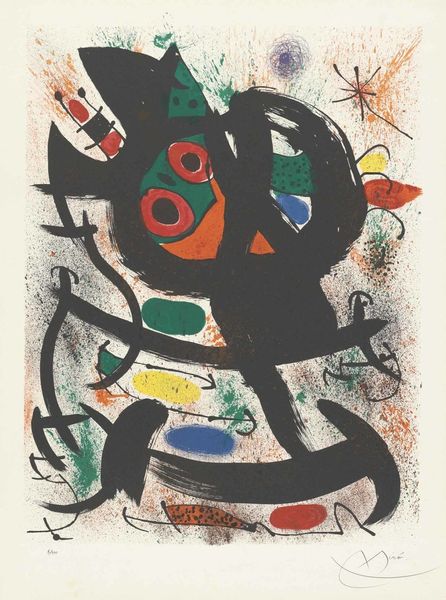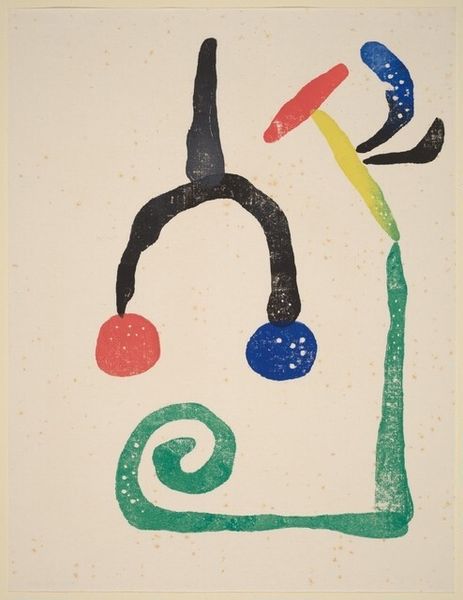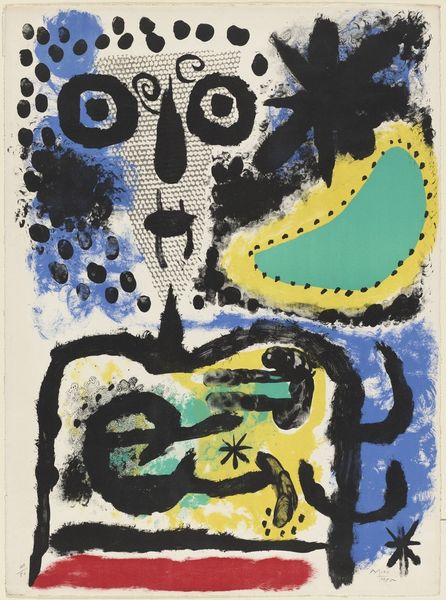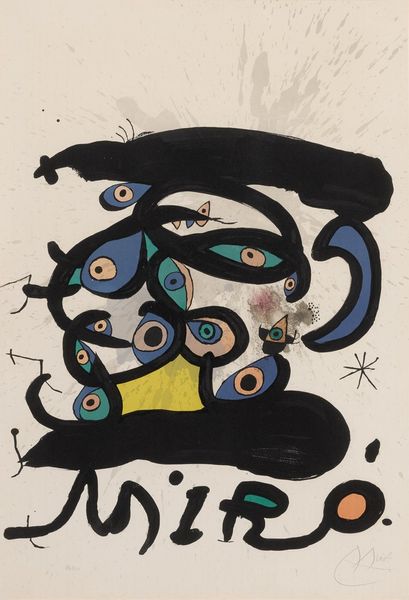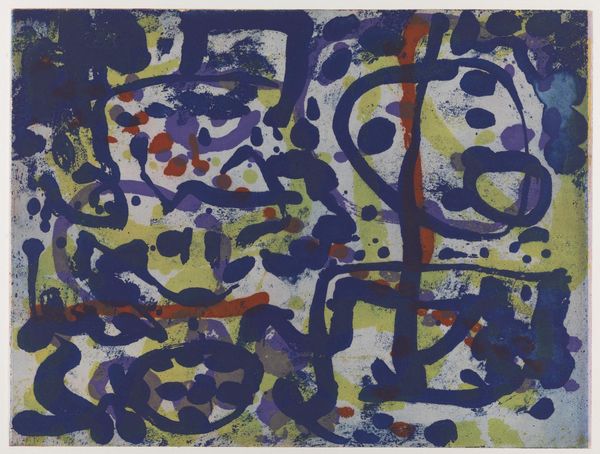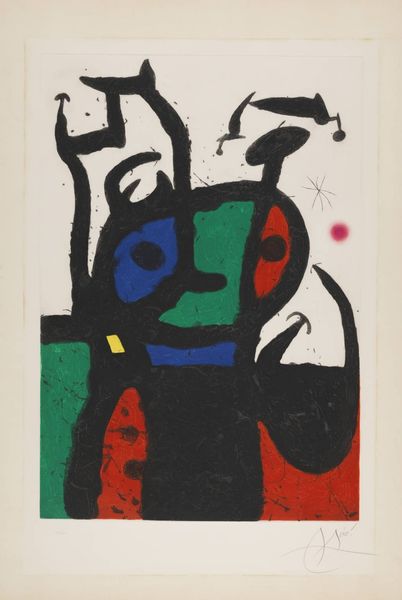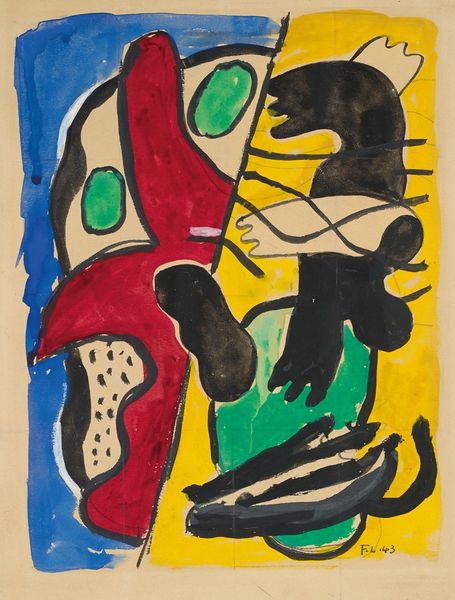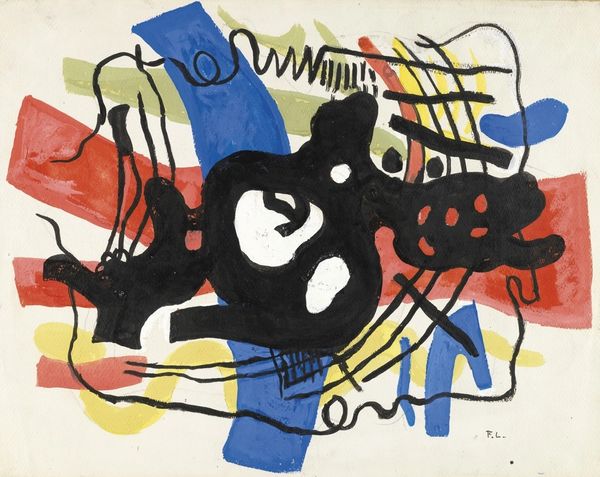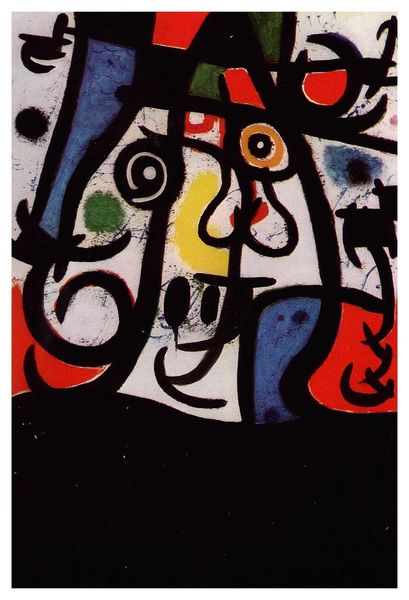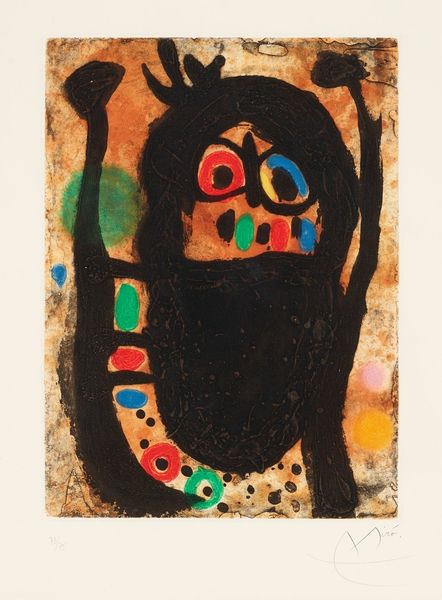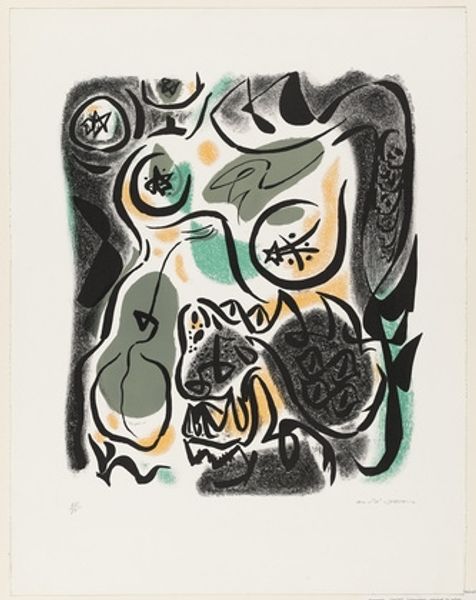
Copyright: Modern Artists: Artvee
Curator: Right now, we're looking at a poster designed by Joan Miró in 1969. It's a mixed-media lithograph, created as an advertisement for an exhibition of his engravings. Editor: It’s playfully chaotic! My first thought is of children's book illustrations, but with an edge. The scattered colors and amorphous shapes feel both inviting and slightly unsettling. Curator: The imagery does harken back to some of the earlier Surrealist and Cubist work that Miró was involved in. You can certainly see it as a simplified and commercial take on those styles, but its creation speaks to the growing importance of museums promoting graphic arts, which sometimes faced artistic hierarchies. Editor: That’s a really interesting point about artistic hierarchies. It does feel significant that Miró, already established, chose to work in this medium. To me, it's a democratizing gesture – art for the masses, advertising itself. The seemingly random placement of those shapes–primary colors–speak of childlike innocence, perhaps an intentional move toward an approachable, less elitist art world? Curator: Precisely. Miró was engaging with contemporary exhibition strategies, using printmaking, something inherently reproducible, to reach a much wider audience. His embrace of lithography really democratized access to his art and ideas, beyond gallery walls. Editor: And it's doing much more than merely reproducing a message. It’s asking questions about production, authenticity, distribution – the artwork’s political life within consumer culture! The splashes almost look like spray paint, a rebellious tag, and the colors—blue, red, green, yellow—are deliberately in your face. Curator: Absolutely. And as museums moved to represent graphic artists, they simultaneously expanded public discourse. Institutions legitimized the field. A key goal was to show art as integral to society at large. Editor: Looking at it now, I think this work serves as a bold reminder that art doesn't exist in a vacuum, that it always responds to, and shapes, our social reality. It's really empowering to consider artwork outside the historical settings in which the institution encourages you to appreciate it. Curator: Agreed. Thinking about museums as a place for discourse helps reveal the ways art both reflected and was manipulated in specific social and political circumstances. I see this work less about being in a stuffy museum and more of being for people in general. Editor: I see this as a conversation-starter, one that makes me consider the ever-changing dialogue of access and engagement.
Comments
No comments
Be the first to comment and join the conversation on the ultimate creative platform.
